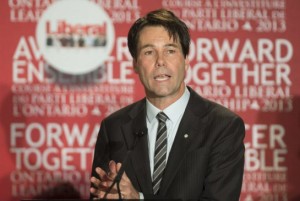 Canadians took a bold, progressive move in the 1960s and created Medicare. And we’ve blocked change ever since.
Canadians took a bold, progressive move in the 1960s and created Medicare. And we’ve blocked change ever since.
Sure, we dribble in new technology. Embarrassment demands we buy at least a few PET scanners and robotic surgical assists. But our core system is unchanged.
Government and Organized Medicine insist that basic clinical services work the same as in the 1960s. Patients see their family doctor. Doctors send patients for ‘high-tech’ X-Rays, ultrasounds or blood tests. Patients drive to licensed and controlled lab facilities. Then they trudge back for results days later.
Ancient ‘High-Tech’
Point of care lab machines now cost only a few thousand dollars. They give accurate results in minutes. Doctors could collect samples and get most common tests done while seeing their patient, if the government allowed.
Currently, family doctors must send patients to a lab for simple ECGs, unless doctors want to buy machines and provide the service for free. Instead, government forces patients to drive to a lab, pay for parking, wait for the test and then wait again for results.
Dentists and auto-mechanics have all the common tests and tools needed for their work. Who would go to a dentist who sent patients across town to get X-Rays? Or an auto-mechanic who couldn’t scope a car’s error codes? No wonder so many people attend emergency departments for care.
Destructive Innovation
Patients want information. They want it much faster than the current system allows. Why not let them create their own information?
Regulators make it too onerous – or just impossible – for doctors to offer very basic services. It punishes patients. Many people struggle to get out of their houses let alone visit multiple labs.
At some point, patients will realize they can buy point of care lab machines for the price of a new TV. They could check their own blood work with the new tech from Theranos (USA Today).
Eric Topol wrote two best sellers on how patient owned technology will change medicine: The Creative Destruction of Medicine: How the Digital Revolution Will Create Better Health Care
and The Patient Will See You Now: The Future of Medicine is in Your Hands
.
Cynics say patients doing self-tests would just create more doctor visits to investigate false positives. It would increase utilization, payers’ biggest fear. But hospitals already use point-of-care tests. And patients have been checking their blood sugar levels at home for decades.
Medicine Resists Change
Voters understand that there isn’t enough money to provide all the latest technology and services. People know Medicare cannot function on a 1960s paradigm forever.
Yet politicians do not engage.
Governments block progress by building walls to keep people trapped inside old ideas. But walls do not stop the pressure for change. At best, they pretend to trap it. Time and change crush those who resist. Not even Medicare can resist change forever. For now, it seems medicine wants to stick with the 1960s and hopes the wall holds.
photo credit: nbcnews.com




